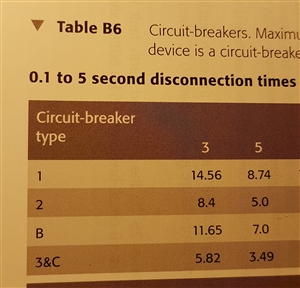good day folks
"Where in TT systems the disconnection is achieved by an overcurrent protective device and the protective equipotential bonding is connected with all extraneous-conductive-parts within the installation in accordance with Regulation 411.3.1.2, the maximum disconnection times applicable to TN systems may be used."
Does this [also] imply that where protective equipotential bonding is not needed, then TN times can be used ?
And what reasons might there be for no similar relaxation of effectively 411.3.2.4 to 411.3.2.3 (1s to 5s for other circuits not covered in 411.3.2.2 and in the light of the above extracted note to 411.3.2.2 Reg ) ?
Regards
Habs
